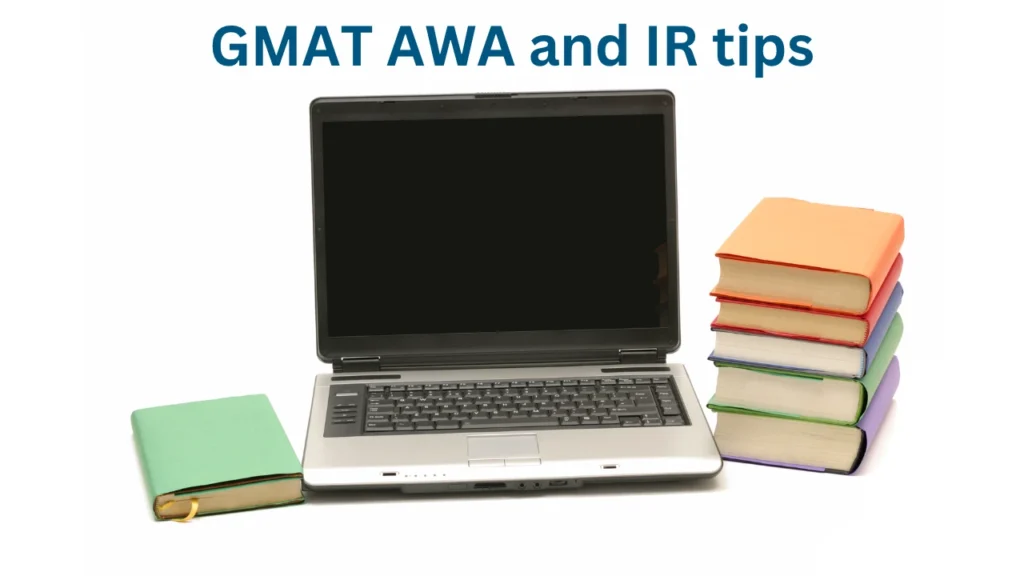The Graduate Management Admission Test (GMAT) is a crucial exam for those looking to pursue a graduate-level business degree. In addition to testing your math and verbal skills, the GMAT also includes an Integrated Reasoning (IR) section and an Analytical Writing Assessment (AWA). These sections are designed to test your ability to analyze and evaluate information, as well as your ability to communicate your thoughts clearly and effectively.

Integrated Reasoning Tips
The Integrated Reasoning (IR) section of the Graduate Management Admission Test (GMAT) is designed to test your ability to analyze and evaluate information from multiple sources. This section consists of 12 questions, which must be completed within 30 minutes.
The questions are divided into four types:
- Graphic Interpretation: These questions involve interpreting information presented in charts, graphs, or other visual formats.
- Table Analysis: These questions involve analyzing data presented in tables or spreadsheets.
- Two-Part Analysis: These questions involve solving two related problems based on the same data.
- Multi-Source Reasoning: These questions involve analyzing data from multiple sources and using that data to solve a problem.
The IR section is designed to be more challenging than the other sections of the GMAT, so it’s important to be well prepared before taking the test.
Here are some tips to help you prepare for the GMAT IR section:
- Understand the format of the questions: The IR section includes four types of questions: graphics interpretation, table analysis, multi-source reasoning, and two-part analysis. It’s important to be familiar with the format of each type of question so that you can approach them with confidence on test day.
- Practice with official GMAT materials: The best way to prepare for the IR section is to practice with official GMAT materials. The GMAT website offers a variety of practice questions and materials that can help you become familiar with the types of questions that will be asked on the test.
- Identify your strengths and weaknesses: Once you have practiced with official materials, identify your strengths and weaknesses. This will help you to focus your study efforts on the areas that need the most improvement.
- Use practice tests to simulate the test-taking experience: Practice tests are a valuable tool for preparing for the GMAT IR section. They allow you to experience the time pressure and format of the test, and can help you identify areas that need improvement.
- Practice your timing and pacing: Because the IR section is timed, it’s important to practice your timing and pacing. This will help you to complete all the questions in the allotted time and maximize your score.
- Learn to work with multiple sources: The IR section is designed to test your ability to analyze information from multiple sources. Practice working with multiple sources, such as charts, tables, and graphs, to improve your ability to analyze and evaluate information.
- Learn to work quickly and accurately: The IR section is timed, so you need to be able to work quickly and accurately. Practice working through questions under time pressure to improve your speed and accuracy.
- Get familiar with the calculator: The IR section allows the use of a calculator, so make sure you are familiar with the calculator and how to use it during the test.
- Take care of your mind and body: A healthy mind and body are essential to performing well on the GMAT. Make sure you get enough sleep and exercise and eat a healthy diet in the days leading up to the test.
- Stay positive and confident: The GMAT can be a stressful experience, but it’s important to stay positive and confident. Believe in yourself and your ability to succeed on the test.
By following these tips, you can improve your chances of performing well on the GMAT IR section. Remember to practice regularly, stay focused, and stay positive, and you will be well on your way to achieving your desired score.
Analytical Writing Assessment Tips
The Analytical Writing Assessment (AWA) section of the Graduate Management Admission Test (GMAT) is designed to test your ability to communicate your thoughts clearly and effectively. This section consists of one essay question, which must be completed within 30 minutes. The AWA section is designed to be challenging, so it’s important to be well prepared before taking the test.
The GMAT AWA is scored on a scale of 0 to 6, in half-point increments. The essay is evaluated by a human grader and an automated scoring system, and the scores from both are combined to produce the final score. The GMAT AWA is a separate section of the GMAT exam and is not used in the calculation of your overall GMAT score.
In the AWA section, there are two kinds of essay questions.
Argument essay: In this area of the exam, candidates are asked to write an essay in which they analyze the logic of a given argument and take into account any and all assumptions made within it. After this, you have to decide if the argument makes sense or not. Another thing to remember is that the candidate shouldn’t make any assumptions that aren’t true. The candidate needs to take a step back from the statement or argument and examine it objectively, without bringing any preconceived notions or opinions to the table. Based on the argument, a candidate must also answer in a way that is consistent with the evidence. To support or argue against the criticism in the question, it’s important to use the right words, sentence structure, and grammar.
Issue essay: The issue essay requires you to write an extended analysis of the prompt provided. About 600 words is the most. You can support the given issue with your ideas, or you can write the article from your own point of view. You must take a stance, pro or con, on the matter at hand, though, and stick to it. You can also come up with ideas for examples based on different prompts or things in the main issue itself. When answering this kind of question in the AWA section, you should write in a way that is unique both in terms of what you say and how you say it.
Here are some tips to help you prepare for the GMAT AWA section:
- Understand the format of the question: The AWA section includes one essay question that asks you to analyze an argument. It’s important to be familiar with the format of this question so that you can approach it with confidence on test day.
- Practice with official GMAT materials: The best way to prepare for the AWA section is to practice with official GMAT materials. The GMAT website offers a variety of practice questions and materials that can help you become familiar with the types of questions that will be asked on the test.
- Understand the scoring system: The AWA section is scored on a scale of 0-6, with 6 being the highest score. It’s important to understand how the scoring system works and what the graders are looking for in your essay.
- Plan your essay: Before you start writing, take a few minutes to plan out your essay. This will help you organize your thoughts and make sure that your essay has a clear structure.
- Use examples to support your points: The more specific examples you can provide, the more convincing your essay will be. Make sure to include examples that are relevant to the argument you are analyzing.
- Use clear, concise language: Avoid using overly complex words or phrases that might confuse the reader. Instead, use clear, concise language that is easy to understand.
- Proofread your essay: Before you submit your essay, make sure to proofread it for any grammar or spelling errors. This will help you to avoid any mistakes that could lower your score.
- Practice your timing and pacing: Because the AWA section is timed, it’s important to practice your timing and pacing. This will help you to complete your essay in the allotted time and maximize your score.
- Take care of your mind and body: A healthy mind and body are essential to performing well on the GMAT. Make sure you get enough sleep and exercise and eat a healthy diet in the days leading up to the test.
- Stay positive and confident: The GMAT can be a stressful experience, but it’s important to stay positive and confident. Believe in yourself and your ability to succeed on the test.
By following these tips, you can improve your chances of performing well on the GMAT AWA section. Remember to practice regularly, stay focused, and stay positive, and you will be well on your way to achieving your desired score.
Final Thoughts
In conclusion, the GMAT is a challenging exam that requires a lot of preparation and practice. By focusing on the IR and AWA sections, you can improve your ability to analyze and evaluate information and communicate your thoughts effectively. With enough practice and preparation, you will be able to tackle these sections of the GMAT with confidence and achieve your desired score.




